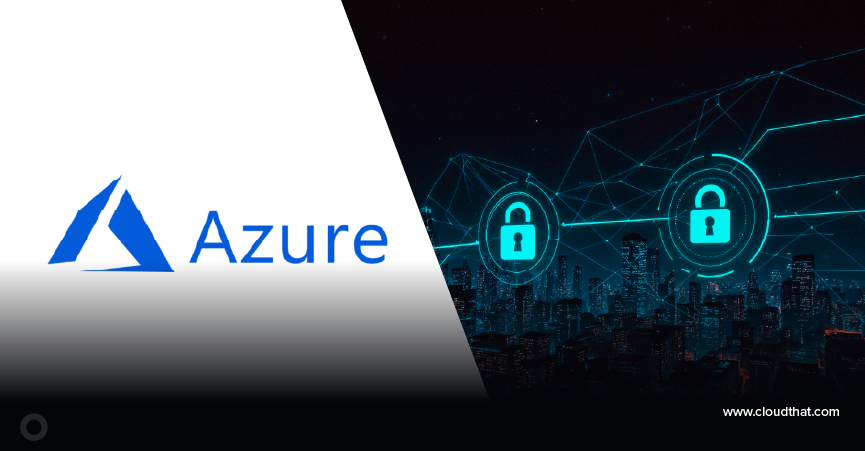|
Voiced by Amazon Polly |
Overview
The blog explores the dynamic landscape of Infrastructure as Code (IaC), focusing on two prominent players: Pulumi and Terraform. As organizations increasingly embrace cloud-native environments, choosing an IaC tool becomes crucial for efficient resource provisioning, management, and deployment. This comprehensive comparison aims to shed light on the strengths, weaknesses, and distinctive features of Pulumi and Terraform, assisting readers in making informed decisions based on their project requirements and preferences.
Pioneers in Cloud Consulting & Migration Services
- Reduced infrastructural costs
- Accelerated application deployment
Introduction
In Infrastructure as Code (IaC), Pulumi and Terraform stand out as leading tools, enabling the creation, deployment, and management of infrastructure on various cloud platforms. While they share common ground in their fundamental goals, there are notable distinctions in their approaches, language support, and features.
Pulumi
Pulumi is an open-source Infrastructure as Code (IaC) tool designed for creating, deploying, and managing resources across various cloud infrastructures. It boasts compatibility with many cloud providers, including AWS, Azure, Google Cloud, Kubernetes, phoenixNAP Bare Metal Cloud, and OpenStack.
This tool proves versatile, enabling the generation of traditional infrastructure components like virtual machines, networks, and databases. Moreover, Pulumi extends its capabilities to design modern cloud elements such as containers, clusters, and serverless functions.
Despite incorporating imperative programming languages, Pulumi primarily operates in a declarative IaC fashion. Users articulate the desired state of their infrastructure, and Pulumi undertakes to construct the specified resources.
To showcase the simplicity of provisioning a resource using Pulumi, consider the following Python code snippet from a file named “s3_pulumi.py”:

Breaking down the code:
- The initial line imports the Pulumi library.
- The second line imports the Amazon S3 module from Pulumi’s AWS provider, pulumi_aws.
- The third line instantiates an Amazon S3 bucket, storing it in a variable named
- The final line exports the bucket’s name.
Terraform
Terraform is a widely adopted open-source infrastructure, such as a code (IaC) tool, designed to facilitate virtual infrastructure creation, modification, and versioning.
This tool is compatible with major cloud providers, allowing users to provision various resources, from fundamental components like storage and networking to more advanced elements like DNS entries. Terraform excels in its user-friendly and efficient approach to building environments, making it versatile for managing multi-cloud and multi-offering setups.
Operating on a declarative IaC model, Terraform streamlines the process for users. They articulate their infrastructure needs through configuration files, clearly describing the desired components. Terraform, in turn, generates a plan outlining the necessary steps to achieve the specified state. Upon user approval of the plan, Terraform executes the configuration, bringing the envisioned infrastructure to life.
To implement the same procedure to get the details of the Amazon S3 bucket using Terraform, consider the following Terraform configuration written in HCL (HashiCorp Configuration Language):

Breaking down the Terraform code:
- The provider block configures the AWS provider, specifying the desired region.
- The resource block creates an Amazon S3 bucket named “my-bucket.”
- The output block exports the bucket’s ID as bucket_name.
Similarities
- Desired State Model:
Pulumi and Terraform adhere to the desired state infrastructure as a code model. Users define the desired configuration of their infrastructure in code, and the deployment engine ensures the actual state aligns with this definition.
- Cloud Provider Support:
Pulumi and Terraform are versatile, supporting numerous cloud providers such as AWS, Azure, Google Cloud, and additional services like CloudFlare and Digital Ocean. Pulumi provides support for both its native providers and all open-source Terraform providers.
- Deployment Logic:
The deployment engine in both tools compares the desired state defined in the IaC code with the current state of the infrastructure. It then takes actions accordingly, whether it involves creating, updating, or deleting resources.
Key Differences
- Language Support:
Pulumi distinguishes itself by supporting a range of general-purpose programming languages, including Python, TypeScript, JavaScript, Go, C#, F#, Java, and markup languages like YAML. In contrast, Terraform utilizes its domain-specific language, HCL.
- Open Source Licensing:
Pulumi is fully open source licensed under Apache License 2.0. On the other hand, Terraform uses the Business Source License 1.1, which may have implications for users based on the licensing model.
- IDE Support:
Pulumi provides robust IDE support with features like code completion, strong typing, error squiggles, and rich resource documentation. Terraform also offers IDE plugins but with more limited features.
- State Management:
By default, Pulumi manages state through Pulumi Cloud, simplifying state management for users. Terraform relies on self-managed state files, with the option for a managed SaaS offering.
- Dynamic Provider Support:
Pulumi introduces dynamic provider support, allowing users to create custom resources with CRUD operations directly in their Pulumi programs. Terraform lacks a direct equivalent to dynamic providers.
- Infrastructure Reuse and Modularity:
Pulumi encourages flexible infrastructure reuse and modularity, enabling the reuse of functions, classes, packages, and components. Terraform, while supporting modularity through modules, has limitations compared to Pulumi.
- Testing and Validation:
Pulumi takes the lead regarding built-in testing support, leveraging general-purpose languages instead of domain-specific ones. This approach enhances the testing capabilities within Pulumi more than Terraform. Pulumi provides comprehensive testing support, including unit, property, and integration testing, leveraging popular test frameworks. Terraform primarily supports integration testing.
- Cloud Native Support:
Pulumi offers rich support for cloud-native technologies, including Kubernetes, with features like CRDs and in-cluster operator support for GitOps delivery. Terraform has generic support for CRDs but lacks the same level of specificity.
- Policy as Code:
Pulumi implements policy as code through CrossGuard, an open-source solution supporting rules written in Python, JavaScript, or Open Policy Agent (OPA) Rego. Terraform uses Sentinel for policy as code, but it is a closed source limited to specific editions. While Terraform adheres to rigid code guidelines, Pulumi offers more flexibility in coding practices, providing developers with a broader range of options.
- Secrets Management:
Pulumi includes first-class support for secrets management encrypting secrets in transit and at rest. Terraform relies on Vault, a separate product, to manage secrets.
- Documentation and Community Size:
Terraform boasts extensive documentation and a thriving community, offering resources and support. On the other hand, Pulumi has a smaller community and comparatively less documentation available.
Conclusion
The choice depends on project needs, language preferences, and the balance between flexibility and established practices.
Drop a query if you have any questions regarding Pulumi or Terraform and we will get back to you quickly.
Making IT Networks Enterprise-ready – Cloud Management Services
- Accelerated cloud migration
- End-to-end view of the cloud environment
About CloudThat
CloudThat is an award-winning company and the first in India to offer cloud training and consulting services worldwide. As a Microsoft Solutions Partner, AWS Advanced Tier Training Partner, and Google Cloud Platform Partner, CloudThat has empowered over 850,000 professionals through 600+ cloud certifications winning global recognition for its training excellence including 20 MCT Trainers in Microsoft’s Global Top 100 and an impressive 12 awards in the last 8 years. CloudThat specializes in Cloud Migration, Data Platforms, DevOps, IoT, and cutting-edge technologies like Gen AI & AI/ML. It has delivered over 500 consulting projects for 250+ organizations in 30+ countries as it continues to empower professionals and enterprises to thrive in the digital-first world.
FAQs
1. What is the fundamental difference between Pulumi and Terraform?
ANS: – Pulumi allows users to use general-purpose programming languages like Python, Go, and JavaScript to define infrastructure, while Terraform employs its domain-specific language called HCL.
2. Which cloud providers do Pulumi and Terraform support?
ANS: – Pulumi and Terraform support many cloud providers, including AWS, Azure, Google Cloud, and Kubernetes. Pulumi’s approach is to provide native support for various providers, while Terraform relies on its extensive ecosystem of Terraform providers.

WRITTEN BY Bhanu Prakash K
K Bhanu Prakash is working as a Subject Matter Expert in CloudThat. He is proficient in Managing and configuring AWS Infrastructure as well as on Kubernetes and DevOps tools like Terraform, ansible, Jenkins, and Git. He is very keen on learning new technologies and publishing blogs for the tech community.


 Login
Login


 March 21, 2024
March 21, 2024 PREV
PREV











Comments